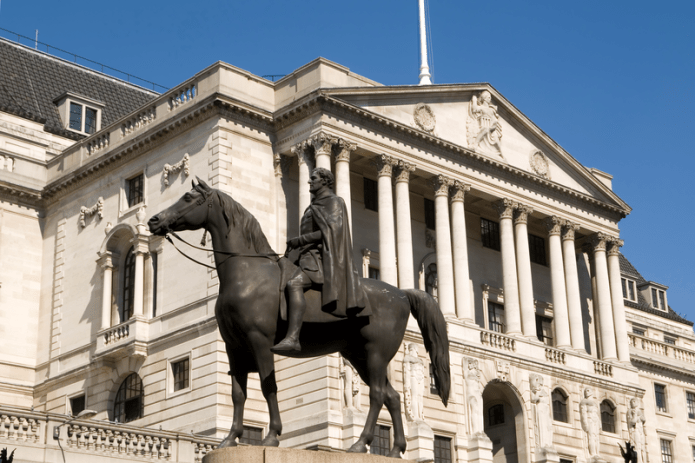Over the last few years, The City of London Investment Trust’s (CTY) investment in banks has undergone a transformation. Having been underweight banks since the financial crisis, CTY’s managers have now maintained a consistent overweight to the sector for over 18 months.
Here, we tell the story of that perspective shift.
The booming case for banks
As ever, it begins with analysis. A number of factors emerged from the analyst and management team watching the banking environment.
The first is the interest rate cycle. Higher interest rates lead to naturally improved margins for banks, being the difference between what the interest rates they pay depositors and charge lenders. While this piqued the team’s initial interest, it wouldn’t be enough on its own to drive a purchase.
Next, deeper analyst work uncovered a quirk of timing that added to the sector’s attractiveness.
Banks hedge out over five to seven years the balances they hold from current and deposit accounts. As hedges that had been taken out when interest rates were low expired, new hedges can be taken out at much better interest rates improving banks’ profitability. CTY’s managers felt that this unusual circumstance was underappreciated by the market, as shown in banks’ low share price valuations.
In addition, it has become clear to regulators that banks had sufficient capital and the mood from politicians had shifted towards wanting banks to lend more to stimulate growth. Finally, the banking sector has seen a reduction in competition with Barclays buying Tesco’s retail banking operations and NatWest buying Sainsburys’. This leaves greater market share for the dominant high street banks to pursue, even as younger tech-led rivals gain some ground.
Timing is everything
All three of these factors meant that the stars were aligned for banks. However, the investment case was compounded by the banks’ dividend culture. With revenue growth on the horizon, many of them guided raising dividends – a trend that has continued.
The City of London Investment Trust aims to provide long-term growth in income and capital. The trust has a 59-year record of increasing dividends. As such, the prospect of dividend growth is a particularly appealing investment return for the trust’s managers.
Buying up banks
Of course, not all banks are made equal. The trust is overweight Lloyds and Natwest, based on the margins that they generate and their particular prospects.
Meanwhile, the managers have taken some profits from Barclays, as the market has demonstrated some concern regarding its investment banking operations. The trust is also underweight HSBC as it is exposed to some political risk, although it has been making progress on pulling out of low return areas and focusing on its profitable channels.
It is also worth noting that in any recession the banks would suffer considerably. The likelihood of a recession therefore forms some of the investment case.
| Discrete year performance (%) |
Share price (total return) |
NAV (total return) |
| 30/06/2024 to 30/06/2025 |
21.8 |
16.8 |
| 30/06/2023 to 30/06/2024 |
11.3 |
15.6 |
| 30/06/2022 to 30/06/2023 |
4.1 |
4.5 |
| 30/06/2021 to 30/06/2022 |
7.7 |
7.5 |
| 30/06/2020 to 30/06/2021 |
21.3 |
20.0 |
All performance, cumulative growth and annual growth data is sourced from Morningstar.
Source: at 30/06/25. © 2025 Morningstar, Inc. All rights reserved. The information contained herein: (1) is proprietary to Morningstar and/or its content providers; (2) may not be copied or distributed; and (3) is not warranted to be accurate, complete, or timely. Neither Morningstar nor its content providers are responsible for any damages or losses arising from any use of this information. Past performance does not predict future returns.
Disclaimer
References made to individual securities do not constitute a recommendation to buy, sell or hold any security, investment strategy or market sector, and should not be assumed to be profitable. Janus Henderson Investors, its affiliated advisor, or its employees, may have a position in the securities mentioned.
Not for onward distribution. Before investing in an investment trust referred to in this document, you should satisfy yourself as to its suitability and the risks involved, you may wish to consult a financial adviser. This is a marketing communication. Please refer to the AIFMD Disclosure document and Annual Report of the AIF before making any final investment decisions. Past performance does not predict future returns. The value of an investment and the income from it can fall as well as rise and you may not get back the amount originally invested. Tax assumptions and reliefs depend upon an investor’s particular circumstances and may change if those circumstances or the law change. Nothing in this document is intended to or should be construed as advice. This document is not a recommendation to sell or purchase any investment. It does not form part of any contract for the sale or purchase of any investment. We may record telephone calls for our mutual protection, to improve customer service and for regulatory record keeping purposes.
Issued in the UK by Janus Henderson Investors. Janus Henderson Investors is the name under which investment products and services are provided by Janus Henderson Investors International Limited (reg no. 3594615), Janus Henderson Investors UK Limited (reg. no. 906355), Janus Henderson Fund Management UK Limited (reg. no. 2678531), (each registered in England and Wales at 201 Bishopsgate, London EC2M 3AE and regulated by the Financial Conduct Authority), Tabula Investment Management Limited (reg. no. 11286661 at 201 Bishopsgate, London, United Kingdom, EC4A 1BD and regulated by the Financial Conduct Authority) and Janus Henderson Investors Europe S.A. (reg no. B22848 at 78, Avenue de la Liberté, L-1930 Luxembourg, Luxembourg and regulated by the Commission de Surveillance du Secteur Financier).
Janus Henderson is a trademark of Janus Henderson Group plc or one of its subsidiaries. © Janus Henderson Group plc
